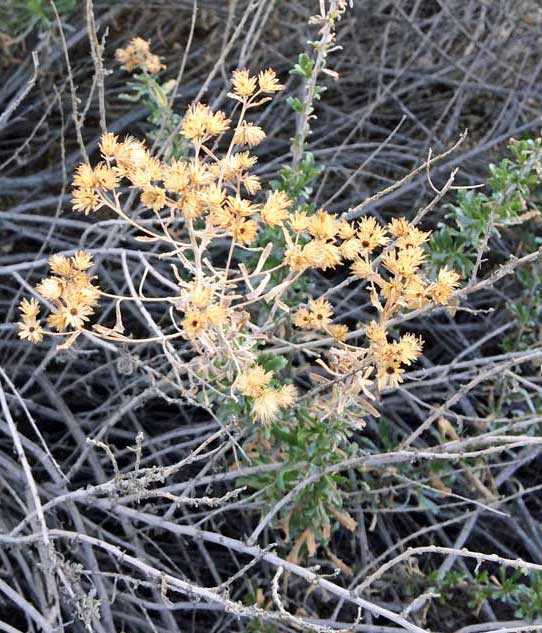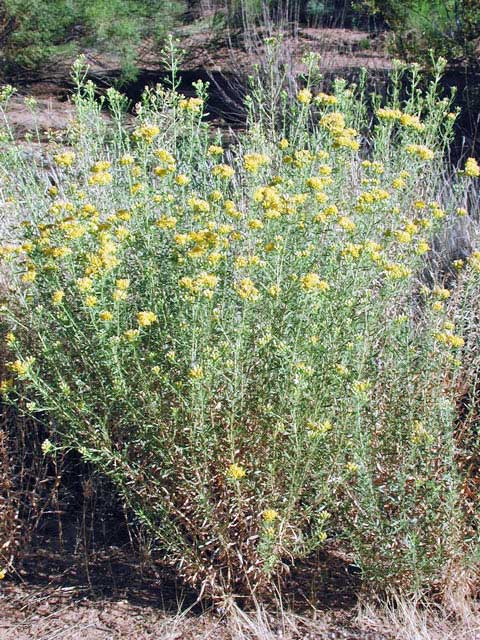Ethnobotany of southern California native plants:
Alkali Goldenbush (Isocoma acradenia)
Alkali Goldenbush (Isocoma acradenia)
Alkali goldenbush is a medium-sized shrub in the Sunflower family. This showy, yellow plant is commonly found on alkaline soils in both the Mojave and Sonoran Deserts. The goldenbush stands about 2-3 feet tall and produces clusters of small yellow flowers in the fall. More than a dozen species of butterflies have been observed visiting these flowers.
As the name suggests, this plant grows in dry, sandy plains and does especially well in alkaline and gypsum soils.
Native Americans used this plant to remedy colds and sore throats.
The Cahuilla prepared a poultice from the boiled leaves of the alkali goldenbush, so as to help sores heal. They also soaked the leaves in a pan of boiling water – and then inhaled the steam when their throats were sore.
Since this shrub grows quickly and the foliage comes in thick, the Cahuilla also used the plant as a windbreak. Cahuilla homes were often surrounded by a border of alkali goldenbush.

Dried flowers on the alkali goldenbush
References:
Bean, Lowell John and Katherine Siva Saubel 1972 Temalpakh (From the Earth); Cahuilla Indian Knowledge and Usage of Plants. Banning, CA. Malki Museum Press (p. 75)
Please return to our main Ethnobotany of southern California page.
On our main ethnobotany page, we present a clickable list of the southern California native plants that became a part of the culture of Native Americans and early European settlers. These plants were used for medicine, food, shelter, drink, tools and art.
Warning: The information about plants on this website is intended for general educational purposes only. The author of this website accepts no responsibility for problems arising from the user’s misidentification, misuse, or use of plants. Please read the full TERMS associated with this website.

